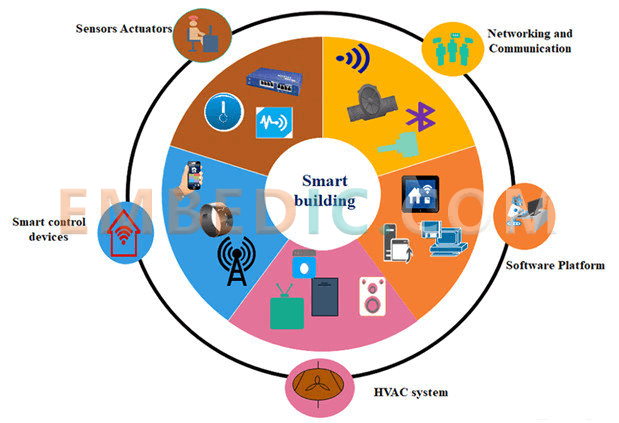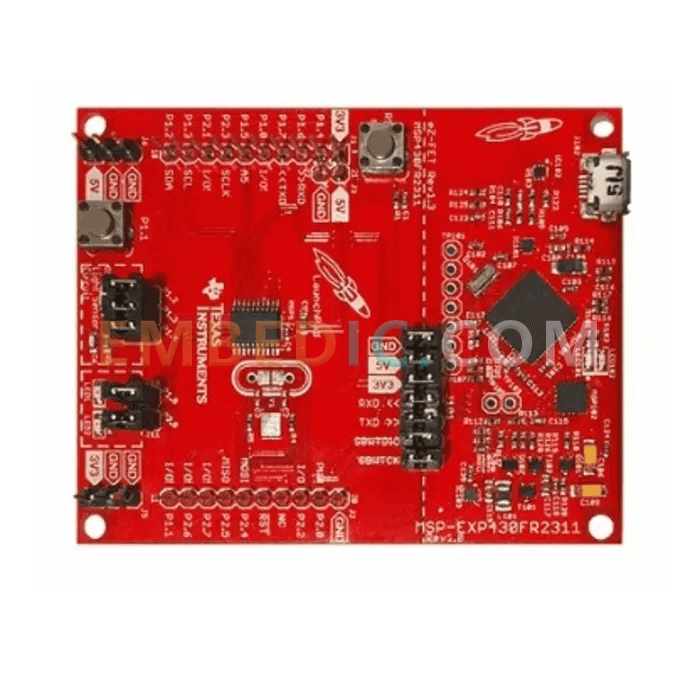The core of a smart building is the 5A system. A smart building is an organic synthesis of these five systems through a communication network system, integrating structure, systems, services, management and the optimal combination between them, making the building safe, convenient, efficient and energy-saving. Intelligent building is a borderline cross-cutting discipline, involving computer technology, automatic control, communication technology, building technology, etc., and there are more and more new technologies in the intelligent building applications.


#1 Electronic induction technology
One of the key technologies of building intelligence electronic induction technology. With the development of high-tech now, the traditional electronic induction technology has not met the needs of intelligent buildings now. Traditional electronic induction, prone to errors in the current transformer, resulting in the transmission of information in the device to make the wrong behavior, more can not well ensure the safety of the equipment, in order to improve the use of intelligent, must improve the electronic induction technology, good electronic induction technology, can ensure the efficient operation of the current transformer.
In our intelligent building common electronic induction transformer technology are electronic type transformer, low frequency type transformer, etc.. Compared with the traditional electromagnetic type transformer, the electronic type transformer has a good communication network foundation, but also the intelligent double propagation, so that the embodiment of information systemization.
#2 Power line carrier technology
The PLC that appears in life is called power carrier communication, and it is a unique communication method for power systems. Power carrier communication is a way to spread information by using power lines, i.e., translating the signal under the carrier source and finally spreading it out.
So it is said that in life, as long as there are wires, information can be exchanged and power carrier communication can spread information, and this way becomes one of the best transmission paths for intelligent buildings. There is another feature that the cost needed for power carrier communication will be lower than wireless propagation. It uses the principle of data signal transmission through the wire to the home appliances, and then control the home appliances a way of working, compared to the wireless transmission is more simple.
#3 Wireless Remote Control Technology
Intelligent home is controlled by wireless remote control of home appliances and other products, for the development of China's wireless remote control technology, relatively speaking, is still mature. It is through the transmitter to transmit signals, coding, into radio waves, the signal is released, the receiver receives the signal, and then transformed into the original signal, and passed out to people.
For the receiver converted into the original signal, by amplifying the power of its signal to push the electrical components of the receiver to achieve building remote control. The remote control system then best arrives at the remote control by accepting the remote control code information and transmitting the remote control information in the use of ultraviolet light.
#4 Advanced electromagnetic voltage regulation technology
Intelligent buildings need to rely on voltage maintenance, building intelligent system it is the use of electronic induction technology, wireless propagation, to achieve real-time control, that requires the power supply system to be in work at all times, the need for stricter voltage and current management technology, to change the traditional in the lighting circuit in the current voltage instability, improve the line and home appliances power environment, so as to improve the intelligent home power supply system.
For now the advanced electromagnetic voltage regulation technology can improve our power supply system, it is a high-voltage electric control equipment, can solve the current high temperature and high voltage problems of some electronic devices, for intelligent buildings to provide a good power supply environment, to further improve the traditional voltage problems, so that we can better use the product.
#5 Other management theories
In the computer network profession, the most used network protocol in the world is the network communication protocol [8], which is still the basic element to run the establishment of the network, in the network, plays a major role, about the computer network and TCP/IP protocol.
The specific protocols for intelligent buildings contain acceptance protocols, transmission control protocols, operation protocols, etc. For TCP/IP protocol, it literally includes TCP and IP protocols, and Chinese refers to transmission control protocols and networks.
What makes everything so smart? In a building automation system you will find smart thermostats, smart lighting switches, smart light bulbs, smart refrigerators, smart heaters and other appliances and all forms of smart devices. Add it all together and you have an awesome building automation system.
A new generation of microcontrollers (MCUs) are driving the building automation revolution with high integration and ultra-low power consumption, fully configurable ferroelectric random access memory (FRAM) and ultra-sensitive analog front ends for connecting advanced sensors that are pushing more and more smart applications into office buildings, factories, apartment complexes, or arguably every corner of any building being automated.
These small devices with big power in the MCU space provide developers with a flexible and configurable base on which they can build a series of smart end nodes that work with sensors, microprocessors, central control systems and other types of building automation system components.
The Smart Thermostat is a good example of the benefits of these new MCU designs for building automation applications. The first smart thermostats are an upgrade to programmable devices that do not require the user to program a schedule of temperature changes for the day or week, but rather "learn" changes to the user's temperature settings and then automatically predict the changes. In addition, many smart thermostats are capable of connecting to wireless communication technologies, such as Wi-Fi® or low-power Bluetooth®, allowing users to view the status of the thermostat, change settings or monitor operations on a smartphone or central control system equipped with wireless connectivity.
Many smart thermostats must be equipped with an ultra-low power, flexible sensing subsystem that processes temperature and humidity sensor signals. By monitoring temperature and humidity, the thermostat can ensure that it provides a specific comfort environment for the occupants of the space, rather than just maintaining a constant temperature. At a given temperature, people prefer a lower humidity environment to a higher humidity level. Knowing the temperature and humidity levels makes it easier for the smart thermostat to adjust the temperature to the proper comfort level, although constant monitoring of both parameters can significantly increase power consumption and drain the device's battery more quickly. Therefore, low power consumption is a major requirement for smart thermostats.
Of course, more integration of these new MCUs can help reduce power consumption, and, some of these devices, such as the MSP430FR2311 MCU, has an analog front-end containing standard operational amplifiers and a transimpedance amplifier (TIA) with 50 microampere (pA) the industry's lowest leakage current power consumption and 1 microampere standby power rating.
A sensor subsystem with this MCU can run on a single battery for up to 10 years. FRAM memory is also a low-power storage medium.
It is non-volatile memory like flash memory, but has fast and low-power write performance with up to 1015 write cycles; greater security making it less vulnerable than flash or EEPROM; and unmatched configuration flexibility.
The performance of the MSP430FR2311 MCU device makes it suitable for smart thermostat applications as well as other building automation devices such as occupancy sensors, smoke or gas detectors, wireless power switches and more.
Learn more about MSP430FR2311 MCU together:
The MSP430FR2311 is a 16-bit ultra-low-power microcontroller (MCU) from Texas Instruments' MSP430 family, featuring FRAM (Ferroelectric Random Access Memory) technology. FRAM is a non-volatile memory that combines the advantages of low-power, high-speed read/write operations, and high endurance.

Features of the MSP430FR2311 include:
The MSP430FR2311 can be used in various applications, such as:
Manufacturer: Microchip
IC MCU 8BIT 28KB FLASH 40UQFN
Product Categories: 8bit MCU
Lifecycle:
RoHS:
Manufacturer: Texas Instruments
IC DSP FIX/FLOAT POINT 176HLQFP
Product Categories: DSP
Lifecycle:
RoHS:
Manufacturer: STMicroelectronics
IC MCU 32BIT 16KB FLASH 48LQFP
Product Categories: 32bit MCU
Lifecycle:
RoHS:
Manufacturer: Texas Instruments
IC DSP FIX/FLOAT POINT 256BGA
Product Categories: DSP
Lifecycle:
RoHS:
Looking forward to your comment
Comment